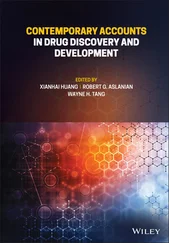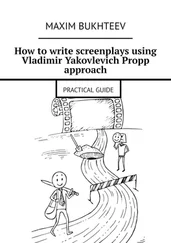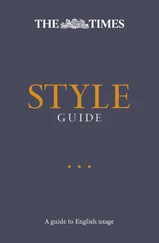Derek Offord - Using Russian - A Guide to Contemporary Usage
Здесь есть возможность читать онлайн «Derek Offord - Using Russian - A Guide to Contemporary Usage» весь текст электронной книги совершенно бесплатно (целиком полную версию без сокращений). В некоторых случаях можно слушать аудио, скачать через торрент в формате fb2 и присутствует краткое содержание. Год выпуска: 2005, Издательство: Cambridge, Жанр: Языкознание, на английском языке. Описание произведения, (предисловие) а так же отзывы посетителей доступны на портале библиотеки ЛибКат.
- Название:Using Russian : A Guide to Contemporary Usage
- Автор:
- Издательство:Cambridge
- Жанр:
- Год:2005
- ISBN:нет данных
- Рейтинг книги:4 / 5. Голосов: 1
-
Избранное:Добавить в избранное
- Отзывы:
-
Ваша оценка:
- 80
- 1
- 2
- 3
- 4
- 5
Using Russian : A Guide to Contemporary Usage: краткое содержание, описание и аннотация
Предлагаем к чтению аннотацию, описание, краткое содержание или предисловие (зависит от того, что написал сам автор книги «Using Russian : A Guide to Contemporary Usage»). Если вы не нашли необходимую информацию о книге — напишите в комментариях, мы постараемся отыскать её.
Using Russian : A Guide to Contemporary Usage — читать онлайн бесплатно полную книгу (весь текст) целиком
Ниже представлен текст книги, разбитый по страницам. Система сохранения места последней прочитанной страницы, позволяет с удобством читать онлайн бесплатно книгу «Using Russian : A Guide to Contemporary Usage», без необходимости каждый раз заново искать на чём Вы остановились. Поставьте закладку, и сможете в любой момент перейти на страницу, на которой закончили чтение.
Интервал:
Закладка:
xiii
Preface to the first edition
therefore devoted in this book to problems of non-equivalence in the two languages in vocabulary, phraseology and verbal etiquette as well as grammar.
Beyond these purposes it is also hoped that the book, through its
broad approach, will increase the student’s general awareness of the structure and resources of the Russian language, and that his or her understanding and appreciation of the immense vitality and depth of
experience of the Russian people may thus in some small way be
enhanced.
xiv
Preface to the second edition
This new edition of Using Russian: a Guide to Contemporary Usage represents an extensively revised and augmented version of the first edition, which was published in 1996. Whereas the first edition
consisted of ten chapters the current edition has twelve and is some ninety pages longer than the first. Our thanks are due to Cambridge
University Press for allowing this enlargement.
Some material in the first edition that is now out-of-date or that is for some other reason of less interest than it was in 1996 (for example, neologisms associated with the period of glásnost and perestróika ) has been excised or reduced. On the other hand, much fresh material has
been incorporated, especially in the first five chapters and the last chapter. The main changes that have been made are as follows.
Chapter 1 is based on sections 1–5 inclusive of the first chapter of the first edition but the material has been substantially rewritten and considerably expanded. Section 1.1, on the distribution of the Russian language, has been revised in the light of information in the most
recent Russian census (2002). Section 1.2, on varieties of language, has been slightly expanded to include material on the distinction drawn, for example by David Crystal, between written and spoken language.
Section 1.3, on registers in contemporary Russian, contains some fresh examples of usage and a new section (1.3.6) on the language of the internet (a subject to which this new edition as a whole pays much
attention). Section 1.4, which is also new, briefly illustrates differences in register as reflected in vocabulary by taking about two dozen
common words and identifying some of their equivalents in low and
high registers. A further new section (1.6), on current debate about standard Russian, deals with concerns about the lowering of the
standard that have arisen as a result of the perceived linguistic
permissiveness that has accompanied the political, economic and social transformation of Russia over the last ten years.
The seven passages that were used to illustrate register in the first edition (located at 1.6 in that edition) have all been excised as now somewhat stale and have been replaced by thirteen fresh passages.
Colloquial speech, the neutral register, the scientific/academic style, the official/business style, the style of journalism and political debate, and the language of imaginative literature are all illustrated in the new edition by two passages each. There is also a passage that illustrates and explicitly discusses the style of email. This latter passage, taken together with one of the passages exemplifying colloquial language on the basis of conversation in an internet chatroom, gives insight into the new
register of Netspeak. The thirteen passages illustrating register, and the translations of and commentaries on them, now take up the whole of
xv
Preface to the second edition
Chapter 2, from which it is hoped a broad view of the range of register available in contemporary Russian will emerge.
Additions have also been made to the two chapters (Chapters 3
and 4 of the new edition) that deal with problems of meaning and translation (one on Russian words and one on English words). In
Chapter 3, for example, a few new entries have been inserted in each of the sections on homonyms (3.1), paronyms (3.4) and faux amis (3.5)
and a new section (3.7) has been included on Russian words that are difficult to render in English because of their cultural specificity. In 4.1
some new entries have been added and some further possible
translations have been provided in entries that were already included in this section in the first edition.
In the chapter on vocabulary and idiom (now Chapter 5) the first section, on neologisms, has been rewritten in order to take account of the recent expansion of Russian lexis by means of the adoption of
loanwords, the extension of the use of colloquial words and the
elevation of demotic words to the level of everyday colloquial speech.
This section now includes sub-sections on slang (5.1.4) and on the new vocabulary associated with computing (5.1.5). The last three sections of Chapter 5 (5.7–5.9) have also been slightly expanded and contain more extensive literal translation of, and fuller comment on, the idioms, proverbs and similes that they present than the equivalent sections in the first edition.
In what is now Chapter 6, section 6.8, on the language of public notices, and section 6.10, on acronyms and alphabetisms, have been slightly expanded to reflect contemporary practice. We have also
appended a short section on the popular Russian conversational genre of the joke, or ‘anecdote’, to the end of this chapter (6.13).
The last four chapters of the first edition (Chapters 8–11 inclusive in this second edition) have required much less substantial revision than the earlier chapters, because they concern morphology and syntax,
which have been relatively little affected by innovation over the eight years that have elapsed since the publication of the first edition. No significant cuts have been made to these chapters, because we feel that it remains useful for advanced learners to have at hand a fairly
exhaustive compendium of information on grammar alongside the
material on those aspects of language (register and vocabulary) that are subject to greater and more rapid change.
Finally, a new chapter has been included on stress (Chapter 12), on the grounds that it is important for the advanced learner to master
Russian stress patterns, which are complex, and that study of them has been relatively neglected in English-language books on Russian. In
keeping with the spirit of the series this new chapter devotes some
attention to variation in usage.
All the material from the first edition which remains substantially
unchanged in this second edition has been reviewed. Mistakes and
flaws identified in the first edition have been corrected and further xvi
Preface to the second edition
minor alterations have been made with respect to both content and
presentation.
Our revision of the first edition has been informed by recent
literature on debate about the standard in English and on the impact of the internet on the English language as well as by new work on the
Russian language. We have also been able to make use of online
resources on the Russian language that were not available when the
first edition was being prepared. The new sources that we have
consulted are included in the revised list of sources that appears on pp. xix–xxi.
Cross-referencing and the two indexes (a list of the Russian words
and affixes to which the book refers and an index of topics covered) have of course been revised to take account of all the changes made.
DO, NG
Bristol, July 2004
xvii
Acknowledgements
Every effort has been made to secure necessary permissions to
reproduce copyright material in this work, though in some cases it has proved impossible to trace or contact copyright holders. If any
Читать дальшеИнтервал:
Закладка:
Похожие книги на «Using Russian : A Guide to Contemporary Usage»
Представляем Вашему вниманию похожие книги на «Using Russian : A Guide to Contemporary Usage» списком для выбора. Мы отобрали схожую по названию и смыслу литературу в надежде предоставить читателям больше вариантов отыскать новые, интересные, ещё непрочитанные произведения.
Обсуждение, отзывы о книге «Using Russian : A Guide to Contemporary Usage» и просто собственные мнения читателей. Оставьте ваши комментарии, напишите, что Вы думаете о произведении, его смысле или главных героях. Укажите что конкретно понравилось, а что нет, и почему Вы так считаете.












